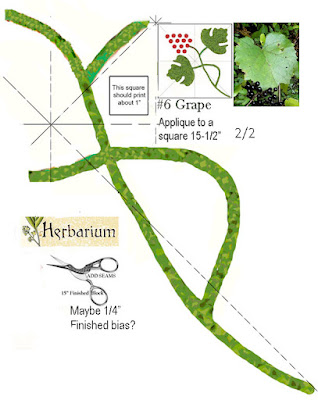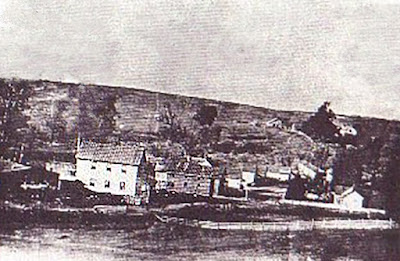Herbarium #6 Grape by Becky Collis for the Axtell Sisters
In 1836 New Yorkers Mary Ann (1849) & Harriette Hannah Axtell (1849) went west to Indianapolis,
Indiana, taking either the Ohio River and/or the new National Road.
They had been asked by the Indiana Presbyterians in the town founded about 15 years earlier to leave their positions at the Geneva Female Seminary in New York and bring culture to young women on the frontier.
Indiana, taking either the Ohio River and/or the new National Road.
Indianapolis in 1825
The Geneva Female Seminary
1847 Ad
The Indianapolis Female Institute taught science (natural philosophy), including botany,
worsted work (extra fee) and manners---to say nothing of Presbyterianism.
Mrs. Moores remembers in 1887
Grape by Denniele Bohannon
Orpha Annette "Nettie" Tyler Flanner (1824–1914)
One student who thrived in the botany classes was Ohio boarder Orpha Tyler Flanner, who named her eldest son Linnaeus for the famous taxonomist. Over her life "Nettie" Flanner created an herbarium of over 15,000 specimens, which she donated to Ohio's Marietta College.
Read more about Nettie Flanner and her herbarium here:
https://civilwarquilts.blogspot.com/2022/10/nettie-tyler-flanners-civil-war.html
In May, 1846 Harriett married George D. Hay of Vincennes, Indiana. A year later she gave birth to Henry Gurley Hay. Sisters Mary Jane and Harriett may have been afflicted with consumption (tuberculosis) and had to give up their school.
19th Century Humor
Envelope showing a later version of the school after the Axtells left in 1849.
Mr. & Mrs. Mills began a new school in the same building in October.
Harriet died that month at the age of 33.
The 1850 census shows widowed husband George and two-year old Henry in Vincennes.
Grape by Becky Brown
Mary Ann, "deranged" by religion, went south after her sister's death. Hoping the climate of the West Indies would restore her health she boarded a steamer heading perhaps for Havana. She died aboard the Henry Clay off Pensacola, Florida in December, 1849. Her student Nettie Flanner also became a bit deranged later about religion---a side effect one supposes of the hopelessness of a belief in predestination and attempts to meet high standards that could never be met.
The Block
Collection of the Shelburne Museum
Botanizing students in the Indiana woods might collect many types of grapes.
Riverbank Grapes Vitis riparia
Leaves vary but they are heart-shaped (chordate) with multiple lobes.
All eight of our inspiration samplers feature a grape block with similar detail in the leaf's serrated edges. The number of grapes varies.
Two sheets this month.
Our pattern is short on serrations but long on grapes.
Printed dots carefully cut by Barbara Brackman






























%20Harpers.jpg)



















